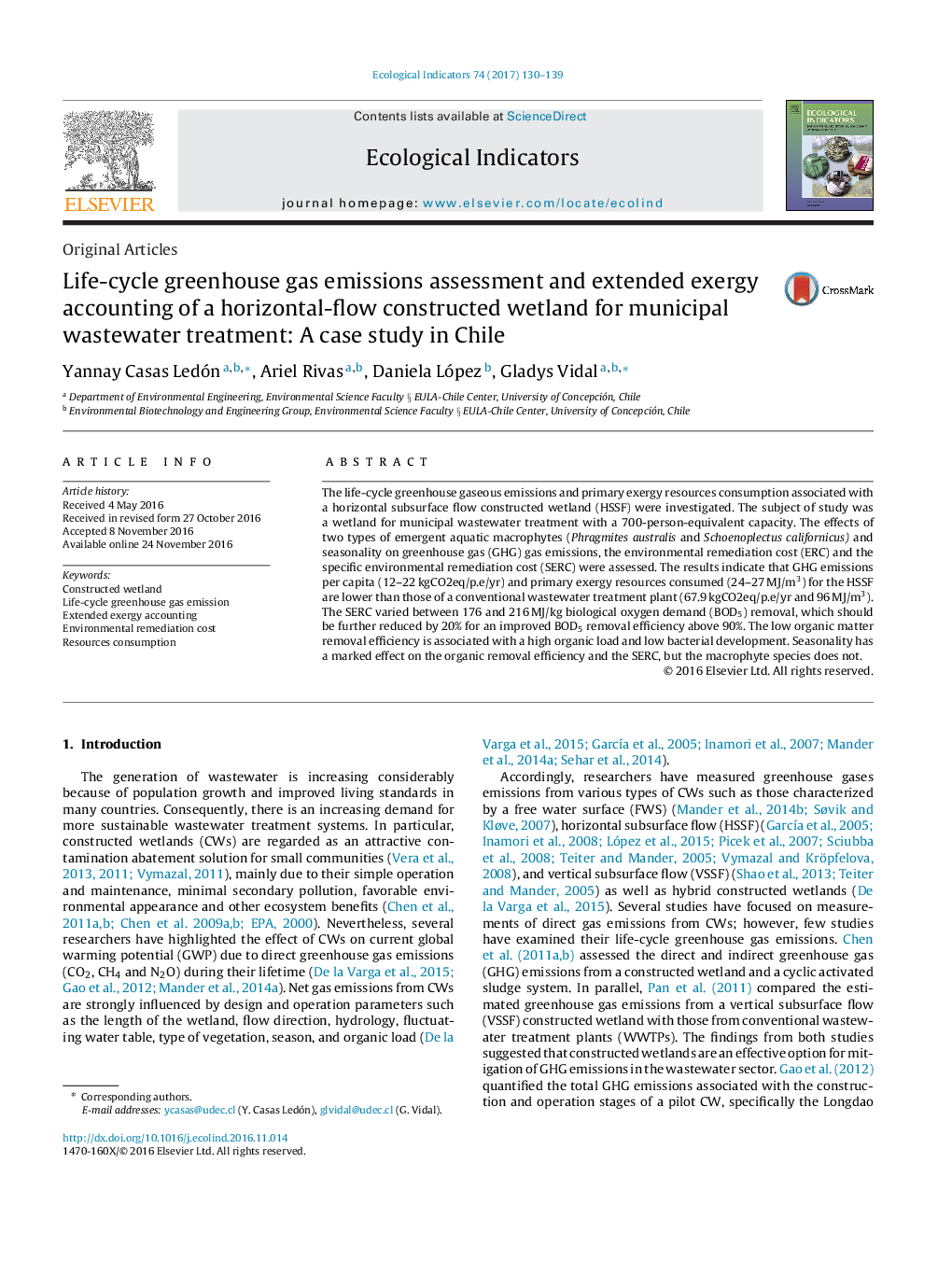| Article ID | Journal | Published Year | Pages | File Type |
|---|---|---|---|---|
| 5741840 | Ecological Indicators | 2017 | 10 Pages |
â¢Extended exergy accounting (EEA) of wastewater treatment using constructed wetland.â¢Constructed wetlands contribute to reduction of GHG and resources consumption in wastewater sector.â¢The seasonality favors the removal efficiency and environmental remediation costs.
The life-cycle greenhouse gaseous emissions and primary exergy resources consumption associated with a horizontal subsurface flow constructed wetland (HSSF) were investigated. The subject of study was a wetland for municipal wastewater treatment with a 700-person-equivalent capacity. The effects of two types of emergent aquatic macrophytes (Phragmites australis and Schoenoplectus californicus) and seasonality on greenhouse gas (GHG) gas emissions, the environmental remediation cost (ERC) and the specific environmental remediation cost (SERC) were assessed. The results indicate that GHG emissions per capita (12-22Â kgCO2eq/p.e/yr) and primary exergy resources consumed (24-27Â MJ/m3) for the HSSF are lower than those of a conventional wastewater treatment plant (67.9Â kgCO2eq/p.e/yr and 96Â MJ/m3). The SERC varied between 176 and 216Â MJ/kg biological oxygen demand (BOD5) removal, which should be further reduced by 20% for an improved BOD5 removal efficiency above 90%. The low organic matter removal efficiency is associated with a high organic load and low bacterial development. Seasonality has a marked effect on the organic removal efficiency and the SERC, but the macrophyte species does not.
